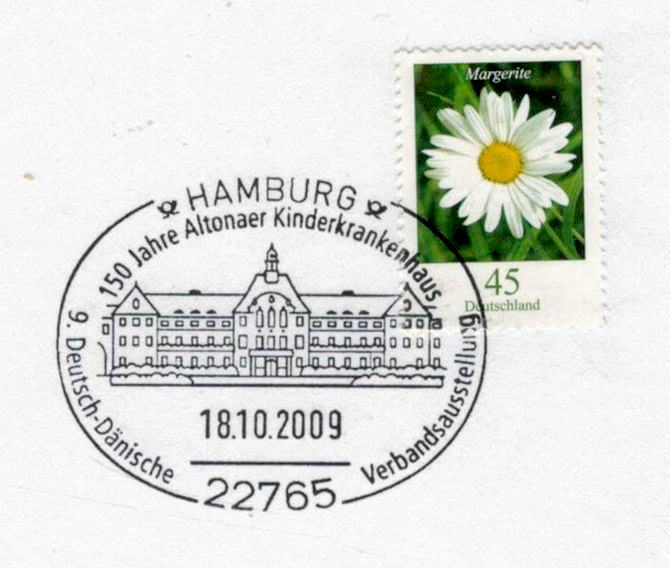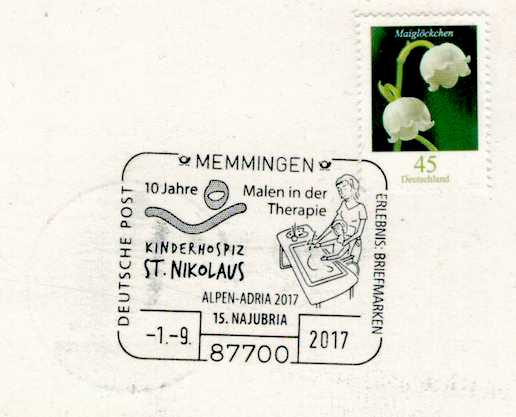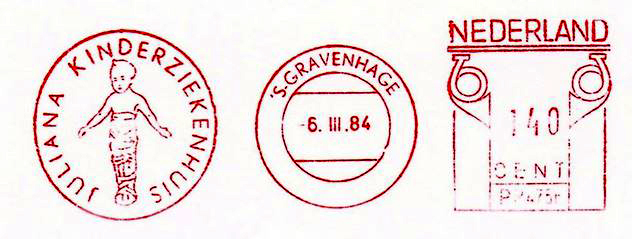 Now it comes again the Christmas season and with it the Christkindl and in anglo-Saxonian countries also Santa Claus. Santa visits children and brings them presents. However, he not only comes home but also to pediatric clinics. The cover of the month is indeed an FDC commemorating the anniversary of a pediatric clinic in Great Britain in 2002 with motifs from Peter Pan.
Now it comes again the Christmas season and with it the Christkindl and in anglo-Saxonian countries also Santa Claus. Santa visits children and brings them presents. However, he not only comes home but also to pediatric clinics. The cover of the month is indeed an FDC commemorating the anniversary of a pediatric clinic in Great Britain in 2002 with motifs from Peter Pan.
 And into these hospitals or on pediatric departments of large hospitals comes now evenly at present also Santa Claus. In 2016, a British research group studied the factors that influence Santa’s visit to hospitals specifically in the United Kingdom. The widespread belief is that this would depend on the behavior of children in the past year, so he comes rather to “good” than to “bad” children. Whether this is true was investigated, or whether attendance is more likely to depend on distance from the North Pole (reindeer and Christkindl can fly, after all) or socioeconomic influences such as parental income, living environment, etc.
And into these hospitals or on pediatric departments of large hospitals comes now evenly at present also Santa Claus. In 2016, a British research group studied the factors that influence Santa’s visit to hospitals specifically in the United Kingdom. The widespread belief is that this would depend on the behavior of children in the past year, so he comes rather to “good” than to “bad” children. Whether this is true was investigated, or whether attendance is more likely to depend on distance from the North Pole (reindeer and Christkindl can fly, after all) or socioeconomic influences such as parental income, living environment, etc.
The study included 186 pediatric clinics across the United Kingdom and yielded the following results:
1. Distance to the North Pole had no effect on Santa Claus attendance. This is not surprising, since he can travel around the world several times in a few days, and he, as well as his reindeer, do not mind flying.
 2. Interestingly, the behavior of the children also has no influence on Santa’s visit. He is not influenced by whether school truancy is particularly common in a region, or whether juvenile delinquency is particularly pronounced. So he comes to bad children just as much as to good ones. The authors say, however, that you don’t necessarily have to tell the kids this.
2. Interestingly, the behavior of the children also has no influence on Santa’s visit. He is not influenced by whether school truancy is particularly common in a region, or whether juvenile delinquency is particularly pronounced. So he comes to bad children just as much as to good ones. The authors say, however, that you don’t necessarily have to tell the kids this.
3. Unfortunately, however, Santa was found to be significantly less likely to distribute his gifts in pediatric clinics that were located in socioeconomically disadvantaged areas. In other words, a factor that the children themselves cannot influence at all.

 One might be saddened that it is this last point, which cannot be influenced by the children themselves, that seems to determine Santa’s visit, and thus socioeconomic disadvantages are structural obstacles to his joy spread by him. This indicates that it would also be important for Santa Claus to have policies and interventions that eliminate socioeconomic disadvantages and inequalities worldwide. The authors speculate that Santa himself may not be able to do this because he would not be allowed to do so by contract. He would not be allowed to change the socioeconomic status of children, that is, to give them gifts that are above their status. Indeed, this could lead to Santa gaining political power, which is not desired. Here, however, I agree with the authors that Santa Claus could re-examine his contracts very carefully.
One might be saddened that it is this last point, which cannot be influenced by the children themselves, that seems to determine Santa’s visit, and thus socioeconomic disadvantages are structural obstacles to his joy spread by him. This indicates that it would also be important for Santa Claus to have policies and interventions that eliminate socioeconomic disadvantages and inequalities worldwide. The authors speculate that Santa himself may not be able to do this because he would not be allowed to do so by contract. He would not be allowed to change the socioeconomic status of children, that is, to give them gifts that are above their status. Indeed, this could lead to Santa gaining political power, which is not desired. Here, however, I agree with the authors that Santa Claus could re-examine his contracts very carefully.
 Santa Claus, by the way, was not alone; he was often assisted by 23 different local heroes, including mainly elves, clowns, and soccer players. These often took over Santa’s central task when he did not appear: to bring joy to the children at Christmas.
Santa Claus, by the way, was not alone; he was often assisted by 23 different local heroes, including mainly elves, clowns, and soccer players. These often took over Santa’s central task when he did not appear: to bring joy to the children at Christmas.
Source: Park JJ, et al, Dispelling the nice or naughty myth: retrospective observational study of Santa Claus. BMJ. 2016 Dec 14;355:i6355.
